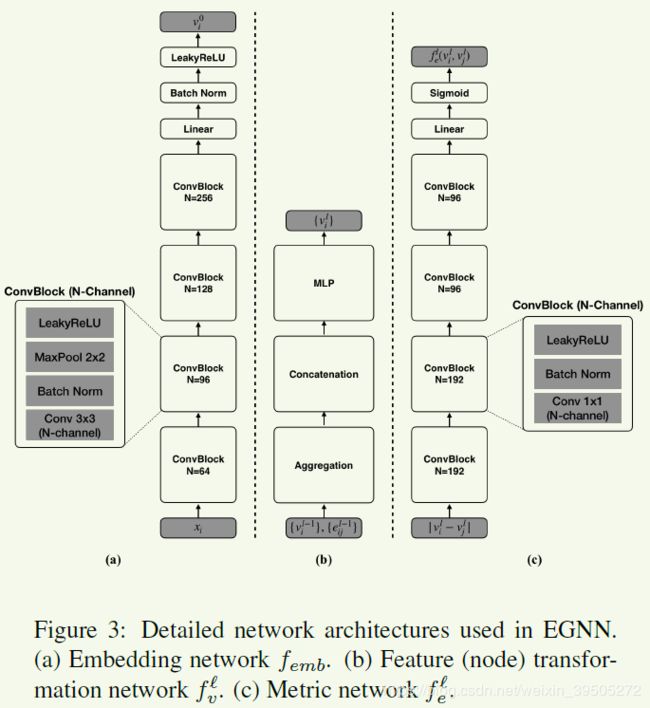- 【论文笔记ing】Pointerformer: Deep Reinforced Multi-Pointer Transformer for the Traveling Salesman Problem
Booksort
online笔记论文论文阅读transformer深度学习
论文中使用一个PointerFormer模型编码器部分:可逆残差模型堆叠解码器部分:指针网络自回归对于一次任务而言,推理阶段:编码器部分:一次解码器部分:循环N次,直至任务结束在训练阶段,使用强化学习,对于一个N个节点的TSP实例,算法中会以不同的起点,跑N次,得到N个轨迹,以满足TSP的对称特性,表示这都是属于一个TSP问题的(真实)解然后会计算这样表示归一化奖励,得到一个advantage,然
- 【论文笔记】GaussianFusion: Gaussian-Based Multi-Sensor Fusion for End-to-End Autonomous Driving
原文链接:https://arxiv.org/abs/2506.00034v1简介:现有的多传感器融合方法多使用基于注意力的拉直(flatten)融合或通过几何变换的BEV融合,但前者可解释性差,后者计算开销大(如下图(a)(b)所示)。本文提出GaussianFusion(下图(c)),一种基于高斯的多传感器融合框架,用于端到端自动驾驶。使用直观而紧凑的高斯表达,聚合不同传感器的信息。具体来说,
- 【论文笔记】RAGLAB: A Modular and Research-Oriented Unified Framework for Retrieval-Augmented Generation
AustinCyy
论文笔记论文阅读
论文信息论文标题:RAGLAB:AModularandResearch-OrientedUnifiedFrameworkforRetrieval-AugmentedGeneration-EMNLP24论文作者:XuanwangZhang-NanjingUniversity论文链接:https://arxiv.org/abs/2408.11381代码链接:https://github.com/fat
- Llama改进之——RoPE旋转位置编码
愤怒的可乐
NLP项目实战#LLaMARoPE旋转位置编码
引言旋转位置编码(RotaryPositionEmbedding,RoPE)将绝对相对位置依赖纳入自注意力机制中,以增强Transformer架构的性能。目前很火的大模型LLaMA、QWen等都应用了旋转位置编码。之前在[论文笔记]ROFORMER中对旋转位置编码的原始论文进行了解析,重点推导了旋转位置编码的公式,本文侧重实现,同时尽量简化数学上的推理,详细推理可见最后的参考文章。复数与极坐标复数
- Llama改进之——均方根层归一化RMSNorm
愤怒的可乐
NLP项目实战#llama
引言在学习完GPT2之后,从本文开始进入Llama模型系列。本文介绍Llama模型的改进之RMSNorm(均方根层归一化)。它是由RootMeanSquareLayerNormalization论文提出来的,可以参阅其论文笔记1。LayerNorm层归一化(LayerNorm)对Transformer等模型来说非常重要,它可以帮助稳定训练并提升模型收敛性。LayerNorm针对一个样本所有特征计算
- 论文笔记 <交通灯><多智能体>CoLight管理交通灯
青椒大仙KI11
论文阅读
今天看的是论文Colight:学习网络级合作进行交通信号控制论文提出的CoLight模型是一种基于强化学习和图注意力网络的交通信号灯控制方法,旨在解决城市道路网络中的交通信号的写作问题,提升车辆通行效率。问题定义为:将交通信号控制问题建模为马尔可夫博弈,每个路口由一个智能体控制,智能体通过观察部分系统状态(当前相位和各车道车辆数),选择动作(下一时间段的相位),目标是最小化路口周围车道的平均队列长
- 《基于超声的深度学习模型用于降低BI-RADS 4A乳腺病变的恶性率》论文笔记 MobileNet
往事随风、、
论文笔记机器学习深度学习论文阅读人工智能机器学习健康医疗
《APPLICATIONOFDEEPLEARNINGTOREDUCETHERATEOFMALIGNANCYAMONGBI-RADS4ABREASTLESIONSBASEDONULTRASONOGRAPHY》《基于超声的深度学习模型用于降低BI-RADS4A乳腺病变的恶性率》原文地址:链接文章目录摘要简介方法患者图像获取与处理深度学习模型统计分析结果讨论结论摘要本研究旨在开发一个基于超声(US)图像
- 论文笔记--Language Models are Unsupervised Multitask Learners
Isawany
论文阅读论文阅读语言模型transformerchatgpt自然语言处理
论文笔记GPT-2--LanguageModelsareUnsupervisedMultitaskLearners1.文章简介2.文章导读2.1概括2.2文章重点技术2.2.1数据集WebText2.2.2分词方法3.GPT-1&GPT-24.文章亮点5.原文传送门6.References1.文章简介标题:LanguageModelsareUnsupervisedMultitaskLearners
- You Only Look Once Unified, Real-Time Object Detection论文笔记
__Lo__
目标检测论文阅读深度学习
文章结构统一检测框架(UnifiledDetection)核心思想YOLO将目标检测视为一个端到端的回归问题,输入的图像经过SingleForwardPass,直接输出物体的信息(边界框的位置、边界框的置信度、类别概率);优势在于速度快,全局理解上下文,这里全局理解上下文的意思是识别物体和背景的关系,减少误检。网络设计网格划分(GridDivision)将图像划分为一个S×S的网格,文中S=7;共
- 【论文笔记】UnifiedQA:新SOTA,生成模型一统问答任务
iLuz
深度学习自然语言处理
目录引言模型介绍1.输入格式2.实验结果总结引言问答任务有多种形式,常见的有抽取式问答(EX)、摘要式问答(AB)、多选题式问答(MC)、判断式问答(YN)。一般的解决方案是针对不同形式的问答任务设计不同的模型。例如,抽取式问答、多选题式问答、判断式问答可以转化为分类任务,摘要式问答可以转换为生成任务。尽管任务形式不同,但模型所需的语义理解和推理能力是共通的,或许不需要format-special
- [论文笔记] [2008] [ICML] Extracting and Composing Robust Features with Denoising Autoencoders
Alexzhuan
DL神经网络机器学习
在06年以前,想要去训练一个多层的神经网络是比较困难的,主要的问题是超过两层的模型,当时没有好的策略或方法使模型优化的很好,得不到预期的效果。在06年,Hinton提出的stackedautoencoders改变了当时的情况,那时候的研究者就开始关注各种自编码模型以及相应的堆叠模型。这篇的作者提出的DAE(DenoisingAutoencoders)就是当时蛮有影响力的工作。那个时候多层模型效果得
- 【论文笔记】SecAlign: Defending Against Prompt Injection with Preference Optimization
AustinCyy
论文笔记论文阅读
论文信息论文标题:SecAlign:DefendingAgainstPromptInjectionwithPreferenceOptimization-CCS25论文作者:SizheChen-UCBerkeley;Meta,FAIR论文链接:https://arxiv.org/abs/2410.05451代码链接:https://github.com/facebookresearch/SecAli
- CLIP论文笔记:Learning Transferable Visual Models From Natural Language Supervision
Q同学的nlp笔记
论文阅读语言模型人工智能nlp自然语言处理
导语会议:ICML2021链接:https://proceedings.mlr.press/v139/radford21a/radford21a.pdf当前的计算机视觉系统通常只能识别预先设定的对象类别,这限制了它们的广泛应用。为了突破这一局限,本文探索了一种新的学习方法,即直接从图像相关的原始文本中学习。本文开发了一种简单的预训练任务,通过预测图片与其对应标题的匹配关系,从而有效地从一个包含4亿
- 论文笔记:Large Language Models are Zero-Shot Next LocationPredictors
UQI-LIUWJ
论文笔记论文阅读语言模型人工智能
1intro下一个地点预测(NL)包括基于个体历史访问位置来预测其未来的位置。NL对于应对各种社会挑战至关重要,包括交通管理和优化、疾病传播控制以及灾害响应管理NL问题已经通过使用马尔可夫模型、基于模式的方法以及最近的深度学习(DL)技术(进行了处理。然而,这些方法并不具备地理转移能力因此,一旦这些模型在某个地理区域训练完毕,如果部署到不同的地理区域,它们将面临严重的性能下降尽管已经做出努力改善地
- 论文笔记:LSTPrompt: Large Language Models as Zero-Shot Time Series Forecastersby Long-Short-Term Prompt
UQI-LIUWJ
论文笔记论文阅读语言模型prompt
202402arxiv1intro1.1大模型+时间序列预测一般有两种类型的方法使用海量时间序列数据重新训练一个时间序列领域的大模型论文笔记:TimeGPT-1_timegpt论文-CSDN博客直接利用现有的大模型,设计prompt,将时间序列数据转换成大模型理解的文本,实现时间序列预测代价小+有成熟的可供使用的大模型1.2本文思路之前的方法大多集中在如何将时间序列数据转换成文本上将时间序列的数字
- 【论文笔记】ResNet论文的全面解析
浩瀚之水_csdn
#论文阅读笔记人工智能
论文:DeepResidualLearningforImageRecognition发表时间:2015发表作者:(MicrosoftResearch)He-Kaiming,Ren-Shaoqing,Sun-Jian论文链接:论文链接一、ResNet论文基本信息论文标题与发表信息论文标题:《DeepResidualLearningforImageRecognition》发表时间:2015年,并在20
- 论文笔记:TrafficPredict: Trajectory Prediction for Heterogeneous Traffic-Agents
CvBeginner
论文笔记轨迹预测计算机视觉
论文笔记:TrafficPredict:TrajectoryPredictionforHeterogeneousTraffic-Agents摘要这是百度在AAAI2019发布的一篇文章。这篇文章提出了一种基于4D-graph的方法实现复杂场景下的轨迹预测,研究对象包含行人、机动车和自行车。实现方法本文提出了一个基于LSTM的算法,名为TrafficPredict。构建了一个4DGraph,输入是轨
- 论文笔记:MobileNetV2: Inverted Residuals and Linear Bottlenecks
菜鸡信息技术
DeepLearning
MobileNetV2:InvertedResidualsandLinearBottlenecksMobileNetV2是MobileNetV1的改进版,Invertedresidual是个非常精妙的设计!MobileNetV1引入depthwiseseparableconvolution代替standardconvolution,减少运算量。MobileNetV1的结构其实非常简单,是类似于VG
- AIGC视频生成模型:ByteDance的PixelDance模型
好评笔记
AIGC深度学习人工智能计算机视觉机器学习transformer论文阅读
大家好,这里是好评笔记,公主号:Goodnote,专栏文章私信限时Free。本文详细介绍ByteDance的视频生成模型PixelDance,论文于2023年11月发布,模型上线于2024年9月,同时期上线的模型还有Seaweed(论文未发布)。热门专栏机器学习机器学习笔记合集深度学习深度学习笔记合集优质专栏回顾:机器学习笔记深度学习笔记多模态论文笔记AIGC—图像文章目录热门专栏机器学习深度学习
- Meta的AIGC视频生成模型——Emu Video
好评笔记
AIGC深度学习人工智能机器学习transformer校招面试八股
大家好,这里是好评笔记,公主号:Goodnote,专栏文章私信限时Free。本文详细介绍Meta的视频生成模型EmuVideo,作为Meta发布的第二款视频生成模型,在视频生成领域发挥关键作用。优质专栏回顾:机器学习笔记深度学习笔记多模态论文笔记AIGC—图像文章目录论文摘要引言相关工作文本到图像(T2I)扩散模型视频生成/预测文本到视频(T2V)生成分解生成方法预备知识EmuVideo生成步骤图
- [论文笔记] 超详细解读DeepSeek v3全论文技术报告
心心喵
论文笔记论文阅读
DeepSeek-V3是一个强大的专家混合(Mixture-of-Experts,MoE)语言模型,总共671B参数,每个token激活37B参数(可以理解为有多个专家,但每个token只会选择一部分专家进行推理,所以一个token的预测,只会用到37B参数),DeepSeek-V3使用了多头潜在注意力(
- [论文笔记] pai-megatron qwen1.5报错
心心喵
论文笔记python
Qwen1.5-0.5b-chat使用example中fintune.py报错·Issue#77·QwenLM/Qwen1.5·GitHub解决方案:transformers升级到4.37.0pipinstallsetuptools==65.5.1pipinstalltransformers==4.37.0
- 基于不确定性感知学习的单图像自监督3D人体网格重建 (论文笔记与思考)
Gamma and Beta
读博笔记算法笔记学习3d论文阅读
文章目录论文解决的问题提出的算法以及启发点论文解决的问题首先这是Self-Supervised3DHumanmeshrecoveryfromasingleimagewithuncertainty-awarelearning(AAAI2024)的论文笔记。该文中主要提出了一个自监督的framework用于人体的姿态恢复。主要是解决了现有的方法对大型数据集的依赖。提出的算法以及启发点论文总体的框架其实
- LLM论文笔记 28: Universal length generalization with Turing Programs
Zhouqi_Hua
大模型论文阅读论文阅读语言模型自然语言处理笔记人工智能
Arxiv日期:2024.10.4机构:HarvardUniversity关键词图灵机CoT长度泛化核心结论TuringPrograms的提出提出TuringPrograms,一种基于图灵机计算步骤的通用CoT策略。通过将算法任务分解为逐步的“磁带更新”(类似图灵机的读写操作),允许模型通过简单的文本复制与局部修改完成复杂计算通用性:适用于任何算法任务(加法、乘法、SGD),不依赖任务特定的数据格
- LLM论文笔记 27: Looped Transformers for Length Generalization
Zhouqi_Hua
大模型论文阅读论文阅读语言模型人工智能论文笔记笔记
Arxiv日期:2024.9.25关键词长度泛化transformer结构优化核心结论1.RASP-L限制transformer无法处理包含循环的任务的长度泛化2.LoopTransformer显著提升了长度泛化能力InputInjection显著提升了模型的长度泛化性能,尤其在二进制加法等复杂任务上效果显著在推理中,通过输出置信度判断迭代停止点的策略能够实现接近最佳的性能主要方法Transfor
- Fast-BEV:A Fast and Strong Bird’s-Eye View Perception Baseline——论文笔记
m_buddy
BEVPerception论文阅读人工智能深度学习
参考代码:Fast-BEV一稿多投的另一篇:Fast-BEV:TowardsReal-timeOn-vehicleBird’s-EyeViewPerception1.概述介绍:这篇文章提供了一种可实际部署的BEV感知方案,能够在当今车端主流计算单元上(NvidiaOrin)实现不错的帧率。从camera到BEV的转换思想来自于M2BEV,但是对这个转换方法中使用查找表和映射方法改进,使得整体视角转
- 读论文笔记-Flamingo:少样本视觉语言模型
joseanne_josie
论文阅读语言模型人工智能
读论文笔记-Flamingo:少样本视觉语言模型Plomblems本文拟解决多模态机器学习中,如何将训练好的模型快速适应到少量标注数据的新任务中的问题。Motivations已有的VLM虽然能在zero-shot的场景下适应于新任务,但他们只解决了有限的使用情况(如CLIP只解决了图片分类),由于主要缺乏生成语言的能力其不能应用于开放性任务。其他的一些方法虽然研究了基于视觉的语言生成但在数据量少的
- 论文笔记-基于多层感知器(MLP)的多变量桥式起重机自适应安全制动与距离预测
sagima_sdu
论文阅读
《IETCyber-SystemsandRobotics》出版山东大学TenglongZhang和GuoliangLiu团队的研究成果,文章题为“AdaptiveSafeBrakingandDistancePredictionforOverheadCranesWithMultivariationUsingMLP”。摘要桥式起重机的紧急制动及其制动距离预测是其安全运行中的关键难题。本文采用多层感知器
- 论文笔记:How Can Large Language Models Understand Spatial-Temporal Data?
UQI-LIUWJ
论文笔记论文阅读语言模型人工智能
arxiv2024011introLLM在NLP和CV领域表现出色,但将它们应用于时空预测任务仍然面临挑战,主要问题包括:数据不匹配传统的LLMs设计用于处理序列文本数据,而时空数据具有复杂的结构和动态性,这两者之间存在显著差异模型设计限制现有的时空预测方法通常需要为特定领域设计专门的模型,这限制了模型的通用性和适应性数据稀缺和泛化能力传统的时空预测方法在面对数据稀缺或稀疏的情况下表现不佳,且泛化
- SentiGAN: Generating Sentimental Texts via Mixture Adversarial Networks论文笔记
catbird233
深度生成模型笔记
另一篇很好的解释:https://www.itcodemonkey.com/article/6378.html摘要在自然语言生成领域,不同情感标签的生成越来越受到人们的关注。近年来,生成性对抗网(gan)在文本生成方面取得了良好的效果。然而,gan产生的文本通常存在质量差、缺乏多样性和模式崩溃的问题。本文提出了一个新的框架--sentyan,它有多个生成器和一个多类判别器,以解决上述问题。在我们的
- 插入表主键冲突做更新
a-john
有以下场景:
用户下了一个订单,订单内的内容较多,且来自多表,首次下单的时候,内容可能会不全(部分内容不是必须,出现有些表根本就没有没有该订单的值)。在以后更改订单时,有些内容会更改,有些内容会新增。
问题:
如果在sql语句中执行update操作,在没有数据的表中会出错。如果在逻辑代码中先做查询,查询结果有做更新,没有做插入,这样会将代码复杂化。
解决:
mysql中提供了一个sql语
- Android xml资源文件中@、@android:type、@*、?、@+含义和区别
Cb123456
@+@?@*
一.@代表引用资源
1.引用自定义资源。格式:@[package:]type/name
android:text="@string/hello"
2.引用系统资源。格式:@android:type/name
android:textColor="@android:color/opaque_red"
- 数据结构的基本介绍
天子之骄
数据结构散列表树、图线性结构价格标签
数据结构的基本介绍
数据结构就是数据的组织形式,用一种提前设计好的框架去存取数据,以便更方便,高效的对数据进行增删查改。正确选择合适的数据结构,对软件程序的高效执行的影响作用不亚于算法的设计。此外,在计算机系统中数据结构的作用也是非同小可。例如常常在编程语言中听到的栈,堆等,就是经典的数据结构。
经典的数据结构大致如下:
一:线性数据结构
(1):列表
a
- 通过二维码开放平台的API快速生成二维码
一炮送你回车库
api
现在很多网站都有通过扫二维码用手机连接的功能,联图网(http://www.liantu.com/pingtai/)的二维码开放平台开放了一个生成二维码图片的Api,挺方便使用的。闲着无聊,写了个前台快速生成二维码的方法。
html代码如下:(二维码将生成在这div下)
? 1
&nbs
- ImageIO读取一张图片改变大小
3213213333332132
javaIOimageBufferedImage
package com.demo;
import java.awt.image.BufferedImage;
import java.io.File;
import java.io.IOException;
import javax.imageio.ImageIO;
/**
* @Description 读取一张图片改变大小
* @author FuJianyon
- myeclipse集成svn(一针见血)
7454103
eclipseSVNMyEclipse
&n
- 装箱与拆箱----autoboxing和unboxing
darkranger
J2SE
4.2 自动装箱和拆箱
基本数据(Primitive)类型的自动装箱(autoboxing)、拆箱(unboxing)是自J2SE 5.0开始提供的功能。虽然为您打包基本数据类型提供了方便,但提供方便的同时表示隐藏了细节,建议在能够区分基本数据类型与对象的差别时再使用。
4.2.1 autoboxing和unboxing
在Java中,所有要处理的东西几乎都是对象(Object)
- ajax传统的方式制作ajax
aijuans
Ajax
//这是前台的代码
<%@ page language="java" import="java.util.*" pageEncoding="UTF-8"%> <% String path = request.getContextPath(); String basePath = request.getScheme()+
- 只用jre的eclipse是怎么编译java源文件的?
avords
javaeclipsejdktomcat
eclipse只需要jre就可以运行开发java程序了,也能自动 编译java源代码,但是jre不是java的运行环境么,难道jre中也带有编译工具? 还是eclipse自己实现的?谁能给解释一下呢问题补充:假设系统中没有安装jdk or jre,只在eclipse的目录中有一个jre,那么eclipse会采用该jre,问题是eclipse照样可以编译java源文件,为什么呢?
&nb
- 前端模块化
bee1314
模块化
背景: 前端JavaScript模块化,其实已经不是什么新鲜事了。但是很多的项目还没有真正的使用起来,还处于刀耕火种的野蛮生长阶段。 JavaScript一直缺乏有效的包管理机制,造成了大量的全局变量,大量的方法冲突。我们多么渴望有天能像Java(import),Python (import),Ruby(require)那样写代码。在没有包管理机制的年代,我们是怎么避免所
- 处理百万级以上的数据处理
bijian1013
oraclesql数据库大数据查询
一.处理百万级以上的数据提高查询速度的方法: 1.应尽量避免在 where 子句中使用!=或<>操作符,否则将引擎放弃使用索引而进行全表扫描。
2.对查询进行优化,应尽量避免全表扫描,首先应考虑在 where 及 o
- mac 卸载 java 1.7 或更高版本
征客丶
javaOS
卸载 java 1.7 或更高
sudo rm -rf /Library/Internet\ Plug-Ins/JavaAppletPlugin.plugin
成功执行此命令后,还可以执行 java 与 javac 命令
sudo rm -rf /Library/PreferencePanes/JavaControlPanel.prefPane
成功执行此命令后,还可以执行 java
- 【Spark六十一】Spark Streaming结合Flume、Kafka进行日志分析
bit1129
Stream
第一步,Flume和Kakfa对接,Flume抓取日志,写到Kafka中
第二部,Spark Streaming读取Kafka中的数据,进行实时分析
本文首先使用Kakfa自带的消息处理(脚本)来获取消息,走通Flume和Kafka的对接 1. Flume配置
1. 下载Flume和Kafka集成的插件,下载地址:https://github.com/beyondj2ee/f
- Erlang vs TNSDL
bookjovi
erlang
TNSDL是Nokia内部用于开发电信交换软件的私有语言,是在SDL语言的基础上加以修改而成,TNSDL需翻译成C语言得以编译执行,TNSDL语言中实现了异步并行的特点,当然要完整实现异步并行还需要运行时动态库的支持,异步并行类似于Erlang的process(轻量级进程),TNSDL中则称之为hand,Erlang是基于vm(beam)开发,
- 非常希望有一个预防疲劳的java软件, 预防过劳死和眼睛疲劳,大家一起努力搞一个
ljy325
企业应用
非常希望有一个预防疲劳的java软件,我看新闻和网站,国防科技大学的科学家累死了,太疲劳,老是加班,不休息,经常吃药,吃药根本就没用,根本原因是疲劳过度。我以前做java,那会公司垃圾,老想赶快学习到东西跳槽离开,搞得超负荷,不明理。深圳做软件开发经常累死人,总有不明理的人,有个软件提醒限制很好,可以挽救很多人的生命。
相关新闻:
(1)IT行业成五大疾病重灾区:过劳死平均37.9岁
- 读《研磨设计模式》-代码笔记-原型模式
bylijinnan
java设计模式
声明: 本文只为方便我个人查阅和理解,详细的分析以及源代码请移步 原作者的博客http://chjavach.iteye.com/
/**
* Effective Java 建议使用copy constructor or copy factory来代替clone()方法:
* 1.public Product copy(Product p){}
* 2.publi
- 配置管理---svn工具之权限配置
chenyu19891124
SVN
今天花了大半天的功夫,终于弄懂svn权限配置。下面是今天收获的战绩。
安装完svn后就是在svn中建立版本库,比如我本地的是版本库路径是C:\Repositories\pepos。pepos是我的版本库。在pepos的目录结构
pepos
component
webapps
在conf里面的auth里赋予的权限配置为
[groups]
- 浅谈程序员的数学修养
comsci
设计模式编程算法面试招聘
浅谈程序员的数学修养
- 批量执行 bulk collect与forall用法
daizj
oraclesqlbulk collectforall
BULK COLLECT 子句会批量检索结果,即一次性将结果集绑定到一个集合变量中,并从SQL引擎发送到PL/SQL引擎。通常可以在SELECT INTO、
FETCH INTO以及RETURNING INTO子句中使用BULK COLLECT。本文将逐一描述BULK COLLECT在这几种情形下的用法。
有关FORALL语句的用法请参考:批量SQL之 F
- Linux下使用rsync最快速删除海量文件的方法
dongwei_6688
OS
1、先安装rsync:yum install rsync
2、建立一个空的文件夹:mkdir /tmp/test
3、用rsync删除目标目录:rsync --delete-before -a -H -v --progress --stats /tmp/test/ log/这样我们要删除的log目录就会被清空了,删除的速度会非常快。rsync实际上用的是替换原理,处理数十万个文件也是秒删。
- Yii CModel中rules验证规格
dcj3sjt126com
rulesyiivalidate
Yii cValidator主要用法分析:
yii验证rulesit 分类: Yii yii的rules验证 cValidator主要属性 attributes ,builtInValidators,enableClientValidation,message,on,safe,skipOnError
- 基于vagrant的redis主从实验
dcj3sjt126com
vagrant
平台: Mac
工具: Vagrant
系统: Centos6.5
实验目的: Redis主从
实现思路
制作一个基于sentos6.5, 已经安装好reids的box, 添加一个脚本配置从机, 然后作为后面主机从机的基础box
制作sentos6.5+redis的box
mkdir vagrant_redis
cd vagrant_
- Memcached(二)、Centos安装Memcached服务器
frank1234
centosmemcached
一、安装gcc
rpm和yum安装memcached服务器连接没有找到,所以我使用的是make的方式安装,由于make依赖于gcc,所以要先安装gcc
开始安装,命令如下,[color=red][b]顺序一定不能出错[/b][/color]:
建议可以先切换到root用户,不然可能会遇到权限问题:su root 输入密码......
rpm -ivh kernel-head
- Remove Duplicates from Sorted List
hcx2013
remove
Given a sorted linked list, delete all duplicates such that each element appear only once.
For example,Given 1->1->2, return 1->2.Given 1->1->2->3->3, return&
- Spring4新特性——JSR310日期时间API的支持
jinnianshilongnian
spring4
Spring4新特性——泛型限定式依赖注入
Spring4新特性——核心容器的其他改进
Spring4新特性——Web开发的增强
Spring4新特性——集成Bean Validation 1.1(JSR-349)到SpringMVC
Spring4新特性——Groovy Bean定义DSL
Spring4新特性——更好的Java泛型操作API
Spring4新
- 浅谈enum与单例设计模式
247687009
java单例
在JDK1.5之前的单例实现方式有两种(懒汉式和饿汉式并无设计上的区别故看做一种),两者同是私有构
造器,导出静态成员变量,以便调用者访问。
第一种
package singleton;
public class Singleton {
//导出全局成员
public final static Singleton INSTANCE = new S
- 使用switch条件语句需要注意的几点
openwrt
cbreakswitch
1. 当满足条件的case中没有break,程序将依次执行其后的每种条件(包括default)直到遇到break跳出
int main()
{
int n = 1;
switch(n) {
case 1:
printf("--1--\n");
default:
printf("defa
- 配置Spring Mybatis JUnit测试环境的应用上下文
schnell18
springmybatisJUnit
Spring-test模块中的应用上下文和web及spring boot的有很大差异。主要试下来差异有:
单元测试的app context不支持从外部properties文件注入属性
@Value注解不能解析带通配符的路径字符串
解决第一个问题可以配置一个PropertyPlaceholderConfigurer的bean。
第二个问题的具体实例是:
- Java 定时任务总结一
tuoni
javaspringtimerquartztimertask
Java定时任务总结 一.从技术上分类大概分为以下三种方式: 1.Java自带的java.util.Timer类,这个类允许你调度一个java.util.TimerTask任务; 说明: java.util.Timer定时器,实际上是个线程,定时执行TimerTask类 &
- 一种防止用户生成内容站点出现商业广告以及非法有害等垃圾信息的方法
yangshangchuan
rank相似度计算文本相似度词袋模型余弦相似度
本文描述了一种在ITEYE博客频道上面出现的新型的商业广告形式及其应对方法,对于其他的用户生成内容站点类型也具有同样的适用性。
最近在ITEYE博客频道上面出现了一种新型的商业广告形式,方法如下:
1、注册多个账号(一般10个以上)。
2、从多个账号中选择一个账号,发表1-2篇博文








